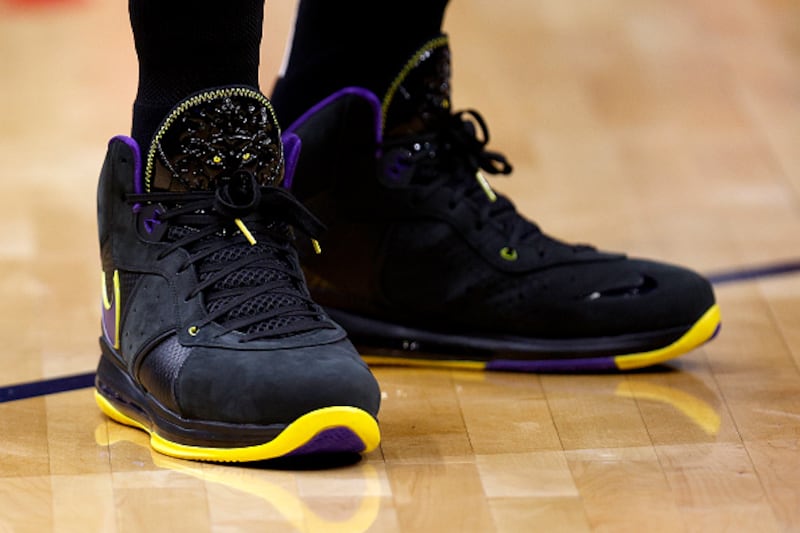The scene was a union hall in Ashland, Ohio, the heartland of America’s rust belt, in the early years of this century.
Charles Kernaghan was delivering a well-worn speech to 60 or so members about the how and why of the country’s disappearing manufacturing sector. His message was simple. The blame could be laid squarely at the door of avaricious companies opting to go overseas to pay mendicant workers in underdeveloped countries a pittance to produce their shoes and garments.
“If you listen to Nike,” he said, holding up one of their $140 jerseys that a woman in El Salvador had been paid 29 cents to make, “you’d think they were a religious organisation.”
[ America at Large: Nike must wake up to human rightsOpens in new window ]
Nobody did more to expose the sins of the church of the swoosh. Kernaghan went after Phil Knight and his confreres with the zeal of a Jesuit priest (his brother was one), traversing the globe exposing the Oregon outfit’s determined exploitation of the poor and willingness to put profit before people.
READ MORE
Upon his death earlier this month, the New York Times described him as the “scourge of the sweatshops”, a fitting epitaph for a 74-year-old Brooklynite who spent decades trying to improve the conditions of the most put-upon workers on the planet.
This often required publicly naming and shaming corporations and personalities involved. The need for such an approach said more about their warped values than his. Indeed, a body of work that saw him publicly joust with the likes of Michael Jordan in the 90s offers a timely reminder that, long before sports washing, plenty of major figures in and around the games cared not a jot about where their fattest cheques were coming from.
“I don’t know the complete situation,” said Jordan, when asked about one more Kernaghan expose of the conditions in Nike factories. “Why should I? I’m just trying to do my job. Hopefully, Nike will do the right thing, whatever that might be.”
A typically amoral Jordanesque response to being told his $20m endorsement deal was funded on the backs of Indonesian women earning 30 cents per hour, working in a place where bathroom breaks were so restricted, they often had to pee under their machines. During another campaign against Nike, Kernaghan produced internal company memos he’d excavated from a garbage dump near a factory, one document estimating how long each task should take a worker, right down to one ten-thousandth of a second.
The son of immigrant parents, a Scottish father and a mother from what was then Czechoslovakia, Kernaghan briefly lectured in psychology before embarking on a peripatetic career that included stints as a carpenter, a stevedore, and a New York City taxi driver who carried a hatchet for personal protection.
He was freelancing as a photographer in El Salvador in the mid-eighties when he witnessed the Dickensian conditions in factories producing goods for some of the best-known American brands. Not something easily forgotten.
Some criticised his outré tactics but his integrity was never in question
The plight of the workers moved Kernaghan to join the National Labour Committee in Support of Democracy and Human Rights, and to dedicate his professional life to righting these wrongs. Working out of a tiny office in New York, often giving press conferences in ill-fitting suits hastily borrowed from friends, he highlighted the injustices being done by major corporations and called out the celebrities associated with them.
“All over the world the people making products for us are young people like yourself,” he said during one speech to college students. “When your life is taking off, the lives of young people who make things for you are over — they’re thrown out on the street about age 30. Nike’s game plan is to put the swoosh on your forehead. The greatest nightmare the corporations have is that you wake up. You have the ability to free your brothers and sisters.”
Nike was just one target. At various times, he had Wal-Mart, Bratz Dolls, Eddie Bauer, Microsoft, The Gap, the NBA and the NFL in his sights. He famously hired a plane to fly over the Oscars trailing a banner that read, “Disney Uses Sweatshops!”
Raised Catholic, he hammered St Patrick’s Cathedral for selling souvenir crucifixes made in Chinese factories by women working 100-hour weeks. Some criticised his outré tactics but his integrity was never in question.

As recently as 2015, he lambasted US president Barack Obama for participating in a promotional event at Nike even after Kernaghan’s group had just published yet another damning report into the company’s treatment of mostly female workers in Vietnam. Nearly two decades had passed since, thanks to the endeavours of the National Labour Committee, the very same topic had been such a part of the national conversation during Clinton’s presidency that it formed the storyline for one of Garry Trudeau’s Doonesbury cartoons.
The saddest part of his passing is that much of the stuff he railed against continues now, just in a different form. In China, the Uighurs remain imprisoned in factories, somewhere between slavery and indentured servitude, producing goods for blue chip companies.
Among the many corporations shamed by their association with that ongoing scandal are Nike, and the list of athletes who could speak out more on the issue include LeBron James, Jordan’s successor as the face of the NBA.
At a certain point in every public speech, Kernaghan’s party piece was to whip out a piece of clothing and announce, “There’s blood on this garment.”
True then. Unfortunately, true now.
















